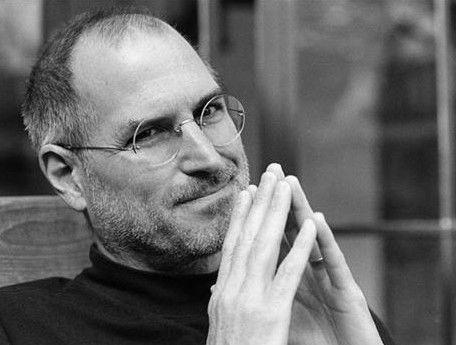徹底的控制
Jobs's reluctance to make the Mac compatible with the architecture of the Lisa was motivated by more than rivalry or revenge.
喬布斯不愿意讓Mac兼容麗薩的架構,并不只是出于競爭或復仇目的。
There was a philosophical component, one that was related to his penchant for control.
還有一個原因,就是他對于控制權的迷戀。
He believed that for a computer to be truly great,
他認為一臺電腦要真正做到優秀,
its hardware and its software had to be tightly linked.
它的硬件和軟件是必須緊密聯系在一起的。
When a computer was open to running software that also worked on other computers,
如果一臺電腦要兼容那些在其他電腦上也能運行的軟件,
it would end up sacrificing some functionality.
它必定要犧牲一些功能。
The best products, he believed, were "whole widgets" that were designed end-to-end,
他認為最好的產品是“一體的”,是端到端的,
with the software closely tailored to the hardware and vice versa.
軟件是為硬件量身定做的,硬件也是為軟件度身定制的。
This is what would distinguish the Macintosh,
正因為此,才使得麥金塔有別于微軟所創造的環境,
which had an operating system that worked only on its own hardware,
麥金塔上使用的操作系統只能在自己的硬件上運行,
from the environment that Microsoft was creating, in which its operating system could be used on hardware made by many different companies.
而微軟和安卓的操作系統可以在許多不同廠家制造的硬件上運行。

"Jobs is a strong-willed, elitist artist
“喬布斯是一個固執的杰出藝術家,
who doesn't want his creations mutated inauspiciously by unworthy programmers," explained ZDNet's editor Dan Farber.
他不希望看到自己創造的東西被二流的程序員給糟蹋了。”ZDNET的編輯丹·法伯寫道,
"It would be as if someone off the street added some brush strokes to a Picasso painting or changed the lyrics to a Dylan song."
“這就好像街邊的某個人在畢加索的畫作上涂了幾筆或是改寫了鮑勃·迪倫的歌詞一樣。”
In later years Jobs's whole-widget approach would distinguish the iPhone, iPod, and iPad from their competitors.
到后來,喬布斯軟硬件結合的一體化產品理念也讓iPhone、iPod和iPad從諸多競爭者中脫穎而出。
It resulted in awesome products.
這一理念造就了偉大的產品,
But it was not always the best strategy for dominating a market.
但這并不總是占領市場的最佳戰略。
"From the first Mac to the latest iPhone,
“從最初的最新的iPhone,
Jobs's systems have always been sealed shut to prevent consumers from meddling and modifying them,"
喬布斯的系統一直都是封閉的,用戶無法對其進行干預或修改。”
noted Leander Kahney, author of Cult of the Mac.
《Mac信徒》一書的作者利安德·卡尼說。
Jobs's desire to control the user experience had been at the heart of his debate with Wozniak over whether the Apple II would have slots
喬布斯當初和沃茲尼亞克爭論是否應該在AppleII上設置擴展槽,
that allow a user to plug expansion cards into a computer's motherboard and thus add some new functionality.
從而允許用戶在電腦主板上插入擴展卡來增加一些新功能時,就表現出了他心中那種控制用戶體驗的強烈欲望。
Wozniak won that argument: The Apple II had eight slots.
沃茲尼亞克在那場爭論中獲得了勝利。AppleII上有8個擴展槽。
But this time around it would be Jobs's machine, not Wozniak's, and the Macintosh would have limited slots.
但這一次,這臺電腦是屬于喬布斯的,不是沃茲尼亞克的。麥金塔電腦不會有擴展槽。
You wouldn't even be able to open the case and get to the motherboard.
用戶甚至都不能打開機箱碰到主板。
For a hobbyist or hacker, that was uncool.
對于業余愛好者或者黑客來說,這就少了很多樂趣。
But for Jobs, the Macintosh was for the masses.
但對喬布斯來說,麥金塔是為大眾設計的。
He wanted to give them a controlled experience.
他想讓用戶的體驗是可控的。


